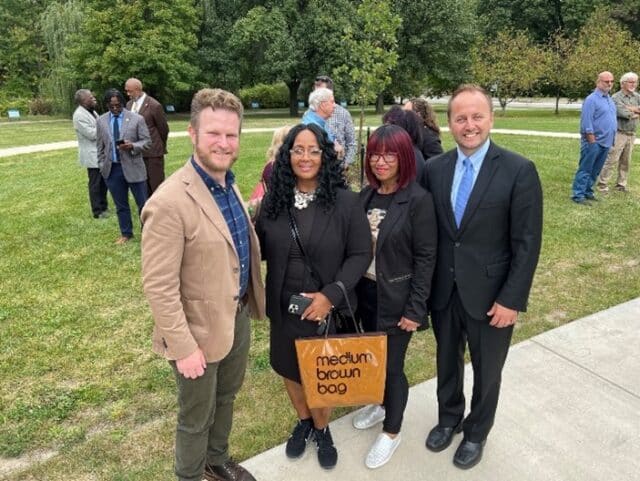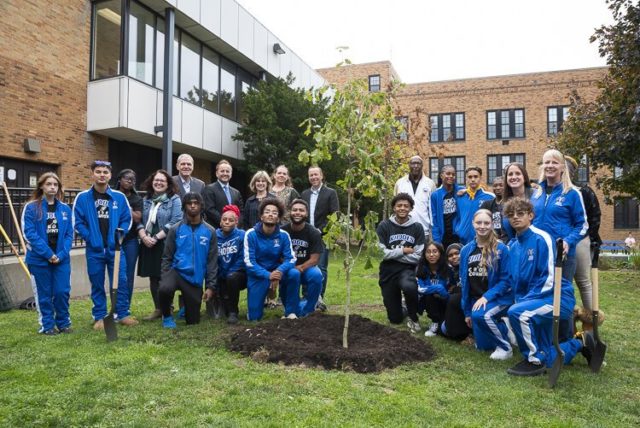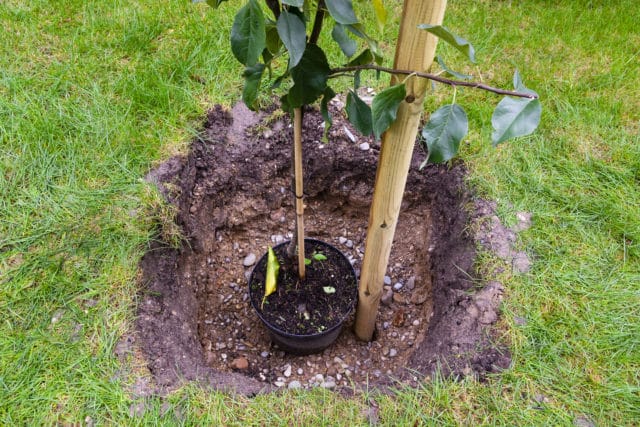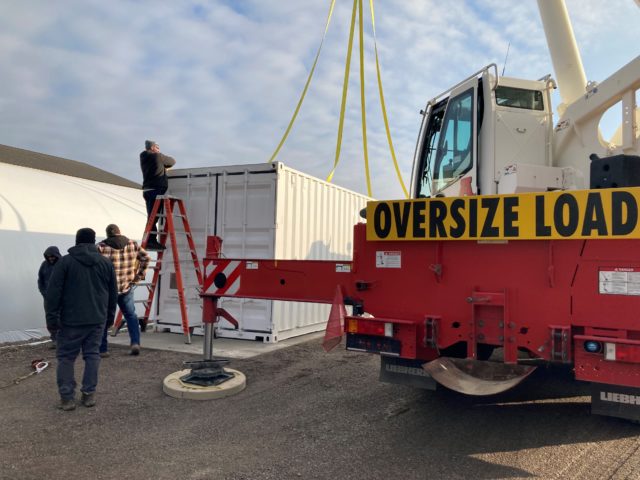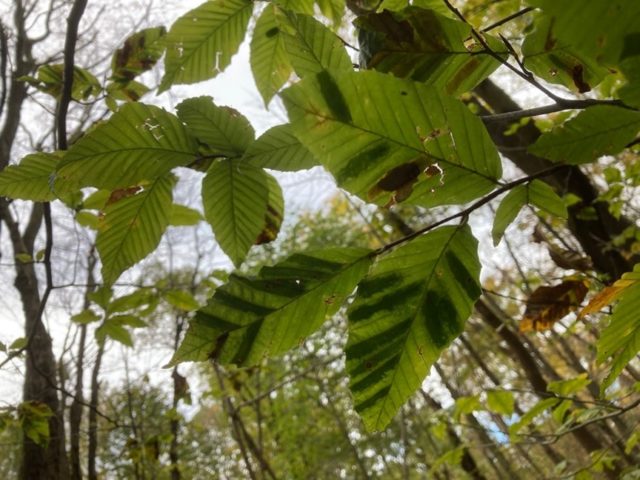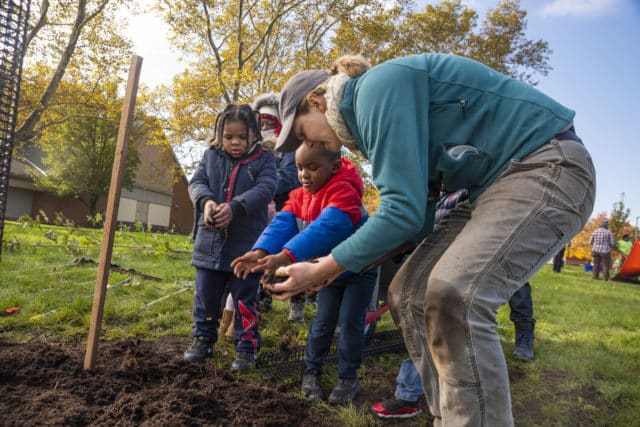The Jesse Owens oak at Rhodes High School may have died, but its legacy lives on through grafting
November 10, 2022


An oak tree (background) planted by Olympic hero Jesse Owens at James Ford Rhodes High School 86 years ago died over the past winter. A genetic replica (foreground) of the tree was planted near it on Wednesday, Oct. 12, 2022.Peter Krouse, cleveland.com
CLEVELAND, Ohio – When Jesse Owens returned from his triumphal performance at the 1936 Berlin Olympics, in which he deflated Adolph Hitler’s claims of Aryan superiority, the Cleveland native brought back four oak saplings, one for each of the gold medals he won in track and field. The trees were gifts of the German Olympic Committee, which presented oaks to all the Games’ gold medal winners.
Three of those trees have been lost to history, but a fourth lived for 85 years beside James Ford Rhodes High School in Cleveland before finally succumbing to old age this past winter.
“It had leaves last summer, last fall, and just nothing came back this spring,” said Jeff Verespej, director of operations for community development organization Cleveland Neighborhood Progress.
Fortunately, Verespej and others had the foresight to create a succession plan. They arranged for Holden Arboretum in Kirtland to propagate the dying oak so that genetic replicas of the historic tree could live on with Owens’ heroic legacy.
One of the propagated saplings was planted Wednesday afternoon near the remains of the original tree, which was cut back this May so that high winds wouldn’t snap its large, lifeless branches.
Verespej, who first took an interest in the tree while executive director of the Old Brooklyn Community Development Corp., said he and the Cleveland Metropolitan School District began working with Holden Arboretum several years ago to preserve the tree as long as possible. At one point the folks at Holden said, “What do you think about grafting?”
“I said, ‘I have no idea what you’re talking about, but that sounds great,’” Verespejsaid.
Grafting is a way to genetically replicate a tree. It’s done by splicing through the bark and exposing the living layer beneath it, called the cambium, of both the new growth and a different rootstock, and then fusing the two together.
Connecting one cambium with another does not provide any transfer of genetic material, said Caroline Tait, vice president of horticulture and collections at Holden Forests & Gardens, which includes the arboretum. The proceduresimply creates a pathway for nutrients to flow up into the tree. The result is an exact replica from the ground up of the original tree, whereas a tree grown from an acorn is the result of pollination that combines the genetic material of two parents.
Owens, who attended East Technical High School, planted one of his Olympic saplings at Rhodes High School because he liked to work out at the school.
“It was probably just the most modern track,” Verespej said.
The other three Olympic samplings were planted at East Tech at East 55th Street, at a home Owens bought for his parents, and at Ohio State University, according to research compiled by Holden. But details are fuzzy and only the Rhodes tree was known to have survived this long.
The hope is to preserve the remains of the original oak on site or somewhere else, Verespej said, and perhaps have something carved into it.
“We’re going to engage the artist community to figure out what’s the best thing to do with it,” Verespej said. Also, the branches that were cut away and placed in storage for safekeeping may be used in some creative way.
A total of 12 replicas have been propagated from the Owens oak. One was planted last year in Rockefeller Park in University Circle, where it will be a focal point of the Jesse Owens Olympic Oak Plaza. The plaza is still under construction and should be completed by late spring of next year, said Elise Yablonsky, vice president of community development for University Circle Inc.
Verespej said it has been proposed that other replicas be planted at East Tech and at League Park in Hough, where the Cleveland Indians once played. The park is now the home of recreational ballfields and the Baseball Heritage Museum. Owens was playground director for a time with Cleveland’s Parks and Recreation Department.
As for what to do with other cloned oaks, plans have not crystallized, Verespej said, but he’s hoping philanthropists from around the world will want to make investments in Cleveland in exchange for a tree that they can then plant.
Verespej said it’s important that Owens’ legacy not be forgotten. He shined on the brightest stage, yet faced racism when he returned to his home country.
“I want to elevate that story,” Verespej said. “I think it should be part of Cleveland’s ethos.”
Peter Krouse
Cleveland.com
